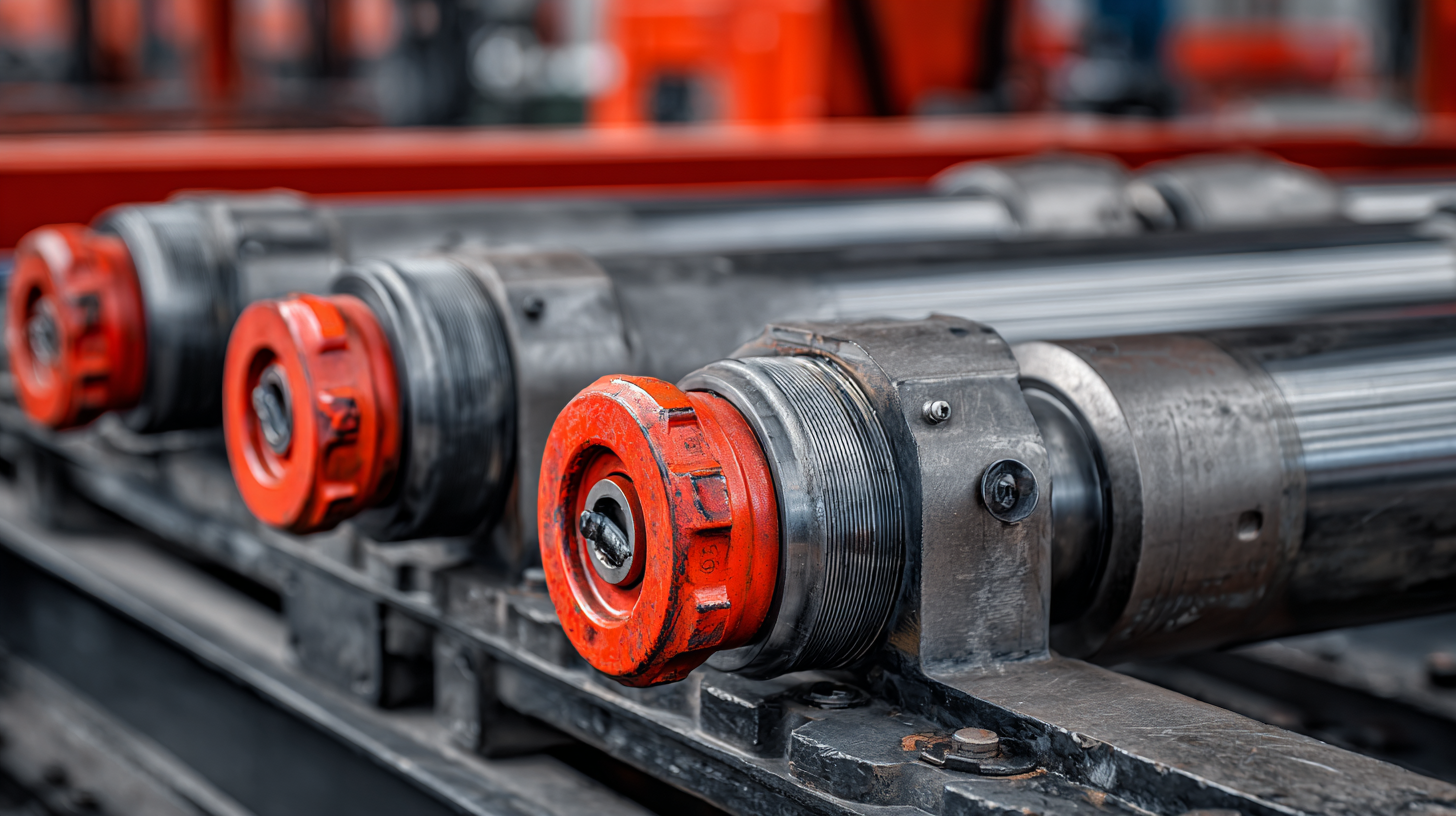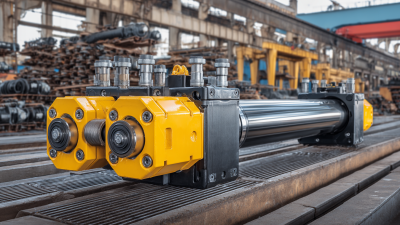 +86-13349293098
+86-13349293098
Leave Your Message
-
 Contact Phone
Contact Phone -
 Contact WhatsApp
Contact WhatsApp -
 Contact Email
Contact Email



In the realm of modern industrial machinery, the role of hydraulic oil cylinders is pivotal in enhancing efficiency and performance across various sectors. According to a recent report by the International Fluid Power Society, the global hydraulic cylinder market is projected to grow at a CAGR of 4.1% from 2021 to 2026, underscoring the increasing reliance on hydraulic systems in manufacturing, construction, and automotive industries.

Hydraulic oil cylinders, which convert hydraulic energy into mechanical energy, are essential in applications ranging from heavy lifting to precision movement. Their ability to deliver high force in compact designs not only optimizes operational capabilities but also contributes to reduced energy consumption. As industries strive for automation and improved productivity, understanding the intricacies of hydraulic oil cylinders becomes crucial for leveraging their full potential in modern machinery.
Hydraulic oil cylinders play a crucial role in the operation of heavy machinery, providing the necessary force and control for various industrial applications. According to the International Society for Automation, hydraulic systems are capable of generating significantly higher power-to-weight ratios compared to their mechanical counterparts, making them ideal for heavy lifting and precision movement. In fact, recent industry reports indicate that hydraulic cylinders can achieve force output exceeding 300 tons, enabling heavy machinery such as excavators and cranes to perform demanding tasks efficiently.

One of the key functionalities of hydraulic oil cylinders lies in their ability to convert hydraulic energy into mechanical work. This conversion is facilitated by pressurized hydraulic fluid that fills the cylinder, pushing the piston and generating linear motion. As per the Fluid Power Journal, about 80% of all hydraulic system failures are related to contamination or improper fluid selection. Consequently, ensuring the right hydraulic oil quality and maintaining cleanliness in the system is critical for the longevity and reliability of hydraulic cylinders. This highlights the importance of regular maintenance and monitoring to optimize the performance of hydraulic systems in heavy machinery.
Hydraulic systems have become an integral part of modern industrial operations, providing numerous benefits that enhance efficiency and productivity. One of the key advantages of utilizing hydraulic oil cylinders is their ability to deliver high force with precision, making them ideal for tasks such as lifting heavy loads, pressing materials, or performing intricate movements. This capability allows manufacturers to automate complex processes, minimize manual labor, and ensure consistent performance, ultimately leading to reduced operational costs.
Moreover, hydraulic systems are known for their versatility and adaptability across various applications. From construction machinery to manufacturing equipment, the ability to easily adjust the pressure and flow of hydraulic fluid means that these systems can be tailored to meet the specific needs of different industries. This flexibility not only improves operational efficiency but also contributes to enhanced safety, as hydraulic systems can be designed to include fail-safes and emergency shutdown features that protect workers and equipment. As industries continue to evolve, the strategic implementation of hydraulic oil cylinders remains a vital component driving innovation and competitive advantage.
Hydraulic cylinders have long been a cornerstone in industrial machinery, primarily due to their ability to generate high force in a compact design. A comparative analysis reveals that while hydraulic systems are powerful, they are challenged by alternative power sources like electric actuators and pneumatic systems. According to a report from the International Energy Agency, hydraulic systems account for approximately 25% of energy consumption in industrial applications. This emphasizes the need for industries to evaluate their power sources critically.
Electric actuators, for instance, offer advantages in terms of efficiency and control. The latest industry research indicates that electric systems can achieve energy savings of up to 50% compared to traditional hydraulic setups. Furthermore, they eliminate the risk of fluid leaks, which are not just environmentally detrimental but can also lead to increased operational costs. In contrast, pneumatic systems, while typically less powerful than hydraulic cylinders, are praised for their speed and clean operation, making them suitable for tasks where rapid movement is prioritized.
As industries continue to innovate, the choice between hydraulic cylinders and alternative power sources will hinge on specific application needs, cost-effectiveness, and environmental considerations. The evolution of these technologies will undoubtedly shape the future of industrial machinery, pushing engineers and decision-makers to weigh these factors carefully in their operations.
| Parameter | Hydraulic Cylinders | Electric Actuators | Pneumatic Cylinders |
|---|---|---|---|
| Force Output (kN) | 100-1000 | 10-100 | 5-150 |
| Speed (m/s) | 0.05-0.5 | 0.1-1.5 | 0.2-1.0 |
| Operating Pressure (bar) | 50-350 | 0-100 | 4-8 |
| Energy Efficiency (%) | 80-90 | 90-95 | 70-80 |
| Maintenance Frequency | Every 6 months | Every year | Every 3-6 months |
| Typical Applications | Construction, Manufacturing | Robotics, Food Processing | Packaging, Automotive |
Hydraulic oil cylinders are crucial components in modern industrial machinery, providing the power needed for various applications. To ensure these cylinders operate efficiently, regular maintenance is essential. Proper maintenance not only enhances performance but also extends the lifespan of hydraulic cylinders, reducing downtime and repair costs.
**Tips for Maintaining Hydraulic Cylinders:**
1. **Regular Inspections:** Schedule frequent inspections to check for leaks, wear, and damage. Early detection can prevent more significant issues down the line.
2. **Fluid Quality:** Utilize high-quality hydraulic oil and regularly check for contaminants. Maintaining clean fluid ensures the smooth operation of components and reduces wear.
3. **Seal Care:** Inspect and replace seals as needed. Worn or damaged seals can diminish cylinder efficiency and lead to leaks, impacting overall machinery performance.
By following these best practices, operators can maximize hydraulic cylinder efficiency and ensure their industrial machinery runs smoothly. Prioritizing maintenance leads not only to better performance but also to cost savings in the long term.
Hydraulic technology has seen significant advancements in recent years, leading to enhanced performance and safety in industrial machinery. Innovations such as smart hydraulic systems equipped with sensors and real-time monitoring capabilities have transformed how these systems operate. These technologies not only improve efficiency by optimizing hydraulic fluid flow and pressure but also provide predictive maintenance alerts, reducing the likelihood of unexpected equipment failures.

Moreover, recent developments in hydraulic oil formulations have further enhanced the safety and longevity of hydraulic cylinders. Modern hydraulic oils with superior thermal stability and reduced toxicity help minimize environmental impact and ensure safe operation under extreme conditions. Coupled with advanced sealing technologies that prevent leaks, these innovations contribute to a safer work environment while maintaining high operational performance levels. As industries continue to adopt these innovations, the significance of hydraulic oil cylinders in driving productivity and safety will undoubtedly grow.






